Currently Reading






Find me elsewhere:
Reading progress update: I've read 117 out of 191 pages.
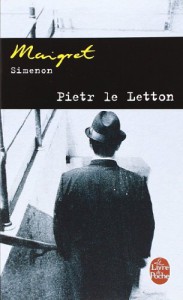
Well, one thing is obvious: Simenon was writing for an audience that clearly had specific images in their mind whenever a Paris locale was invoked -- no need to go into great descriptive and atmospheric detail; mere name-dropping of the location was sufficient. All of which is fine for today's readers as long as they are at least familiar with the present-day incarnations of these places (and possibly their history), or have seen period images, but which makes the novel somewhat inaccessible if you've never been to Paris nor have other ways of evoking the same sense of instant recognition that Simenon's contemporaneous audience would have had. Which probably goes some way towards explaining (in addition to their several TV adaptations over the decades) why his books are still incredibly popular in Europe -- and not merely in France, either -- but somewhat less well known elsewhere.
Also, I note that Maigret is another one of the "great detectives" who didn't age in real time. We're told at the beginning of "Pietr le Letton" that he was 45 years old in 1931, when this book was published, which would have made for retirement in the early 1950s. Yet le commissaire Maigret was still investigating crimes in the early 1970s ...


36 Quai des Orfèvres, the police headquarters of Paris, then and now. There's a neat blog page (in French) looking at the history of the place. (Note: Linked place names hereafter contain similar links to information found on the web.)


Simenon's "Majestic" is a luxury hotel in the vein of the Meurice (left) and the Georges V (right) (both photos from Wikipedia). Its interior might well have looked like this:
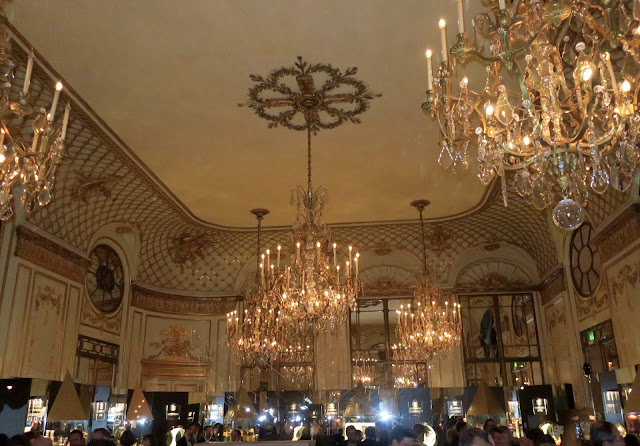
... and we're told that it's on the Champs Elysées, which looked like this then:

Maigret and the man he pursues take the train from, and arrive back in Paris at the Gare St. Lazare:


Maigret then follows his quarry on foot all the way from the Gare St. Lazare across the city centre to the Rue du Roi de Sicile, via Rue du 4 Septembre and Les Halles, which is easily a 50-minute walk. (NB: the police headquarters at 36 Quai des Orfèvres are on the southern bank of Île Notre Dame, just below Sainte Chapelle in the below map, in the direction of Pont Neuf):
Les Halles, the famous "Belly of Paris" epitomized in Émile Zola's novel of the same name -- razed in the 1970s and replaced by a forum, which in turn was replaced by a canopy roof in the 2000s:


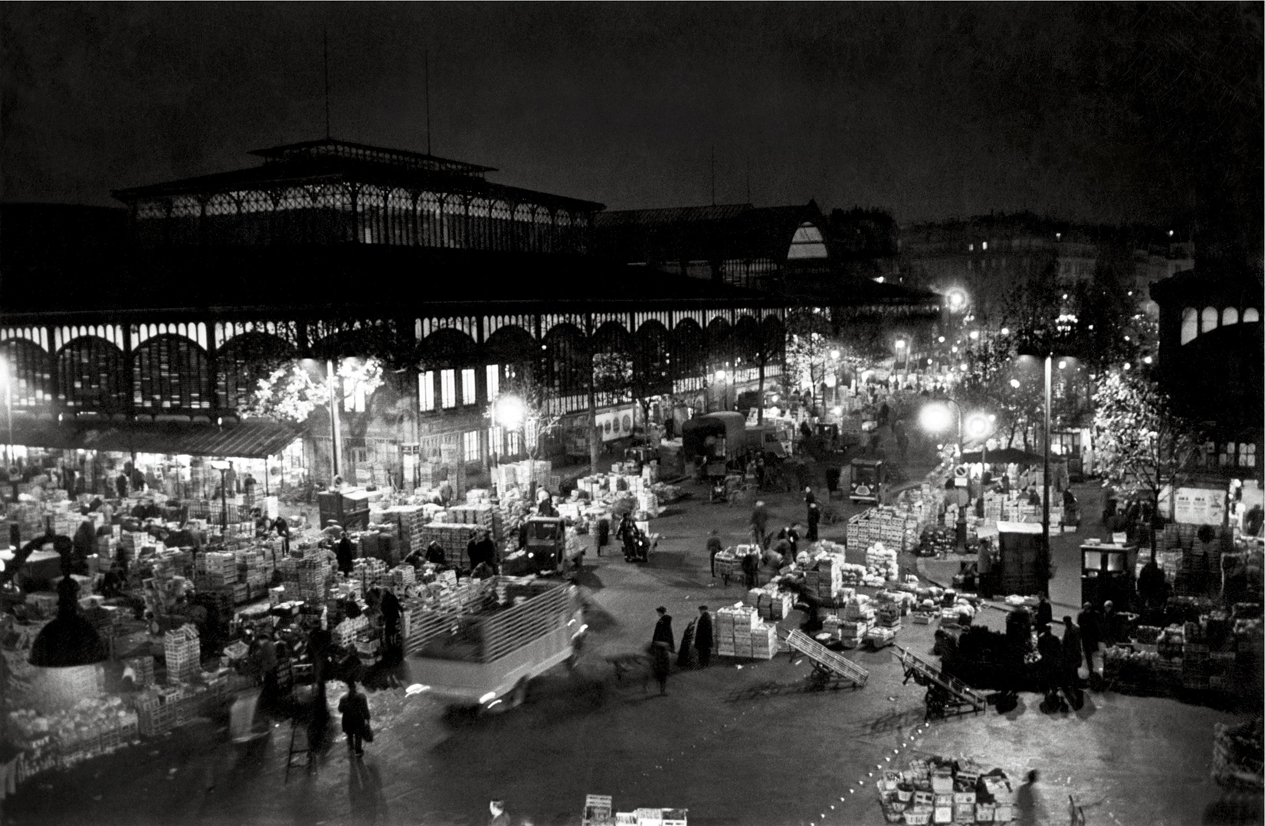
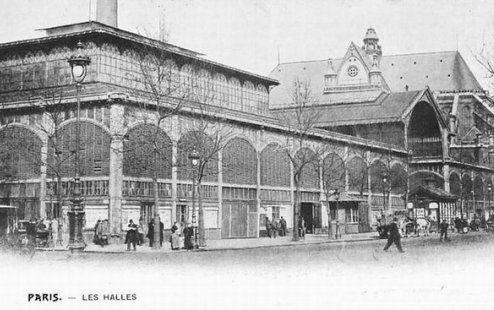

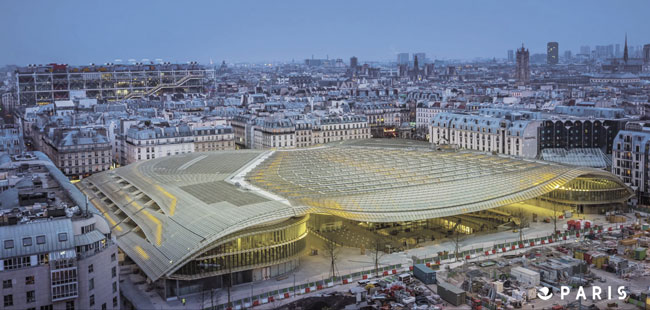
The Rue du Roi de Sicile was part of the old Jewish quarter in the Marais (video on YouTube -- opens on BookLikes only in blog view, not in dashboard view):

Rue due Roi de Sicile (photos from Wikiwand)

... and elsewhere in the old Jewish quarter.
The Marais (which literally translates as "swamp" -- for a [geographical] reason) today is an area of bars and nightclubs, and in the early 2000s used to be one of the centres of the gay scene (don't know whether that's still the case).
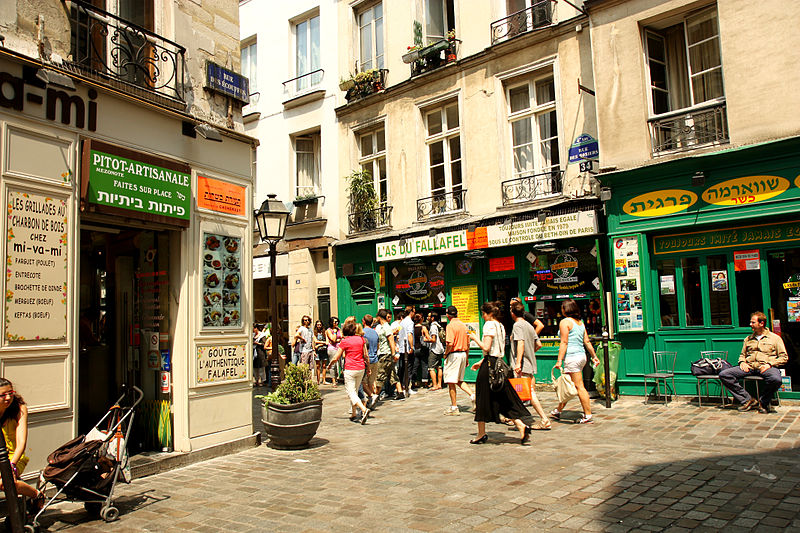

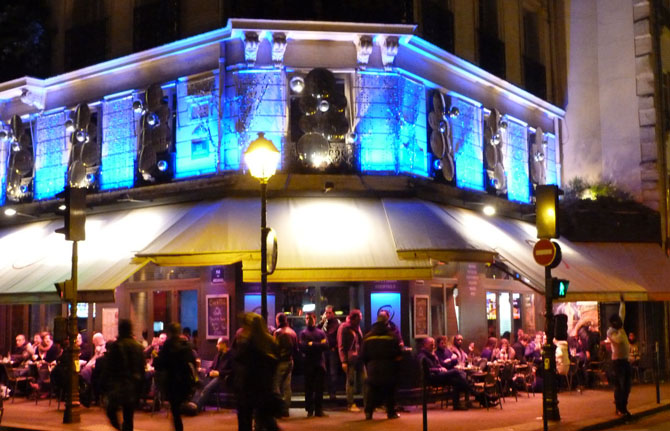
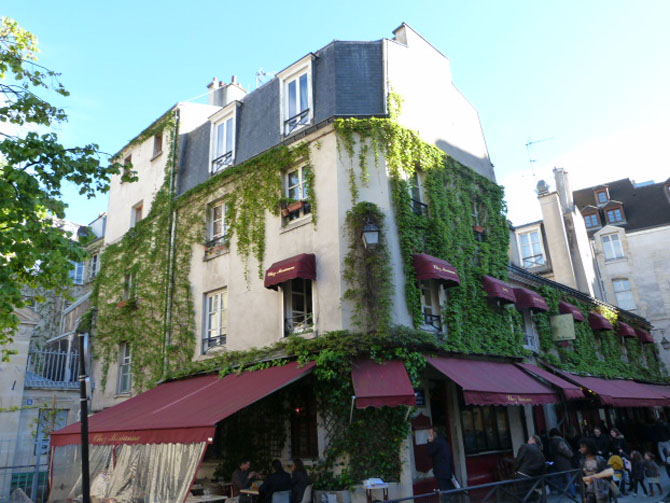
As Simenon highlights, it is only a few hundred feet from the Rue de Rivoli, next to the Champs Elysées one of the most luxurious shopping miles of Paris -- in the 1930s, the contrast between the poverty of the Jewish quarter and the splendour of the Rue de Rivoli must have been staggering:

(Rue de Rivoli, then and now)
The evening of that same day, Maigret follows the American billionaire Mortimer-Levingston and his wife to the (théâtre du) Gymnase on Bd. Bonne Nouvelle (on the above map, the stretch between Bd. Haussmann and Bd. Saint-Martin) where they attend the performance of an opera. (Note: Today's incarnation of the Gymnase is a cabaret; it's still in the same building, but the shows presented are entirely different):

Afterwards, the billionaire couple proceed to a dance bar on (or near) the Rue la Fayette (bottom row: the same corner of Rue la Fayette, then and now -- photos from CParama / Le Métropolitain de Paris):


Bars in Montmartre, Montparnasse and Saint Germain des Près similar to what Simenon's Pickwick Bar would probably have been like (photos from various sources):







And, finally, a few images of Fécamp (Normandie), where Maigret follows the man identified as Pietr le Letton at the beginning of the book (right: an early 20th century painting of Fécamp harbour by Robert Antoine Pinchon; both images from Wikipedia):










 4
4  15
15 